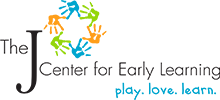We offer an enriched, well-rounded education, which includes a combination of secular, Judaic Studies, and Spanish.
In Math, children learn to understand math qualities and patterns. We use visualization of quantities and provide visual and kinesthetic strategies for learning mathematics. We know that children learn best when they can manipulate objects and think about the inherent patters.
To build literacy, we teach letters in a developmental order. We teach capitals first, and then lowercase letters. All letters are taught in small groups of similar formation. Children master the easier letter groups, and then move to the more complex letters groups. Through this mastery, children are able to grasp and explore the building blocks of reading.
Our reading program is based on phonemic awareness, phonics, and word knowledge. Reading is primarily a visual skill, but is best taught when involving all the key avenues to the mind– hearing, saying aloud, writing, and seeing. By linking speaking, spelling, and writing with reading, we connect four different pathways to the brain, thereby paving the way for everyone to learn. Using the handwriting skills students gain, we integrate spelling into our reading program and enable children to form the words they are learning to read.
Children will leave Kindergarten armed with the reading, writing, and mathematics skills they will need to be successful first graders!
